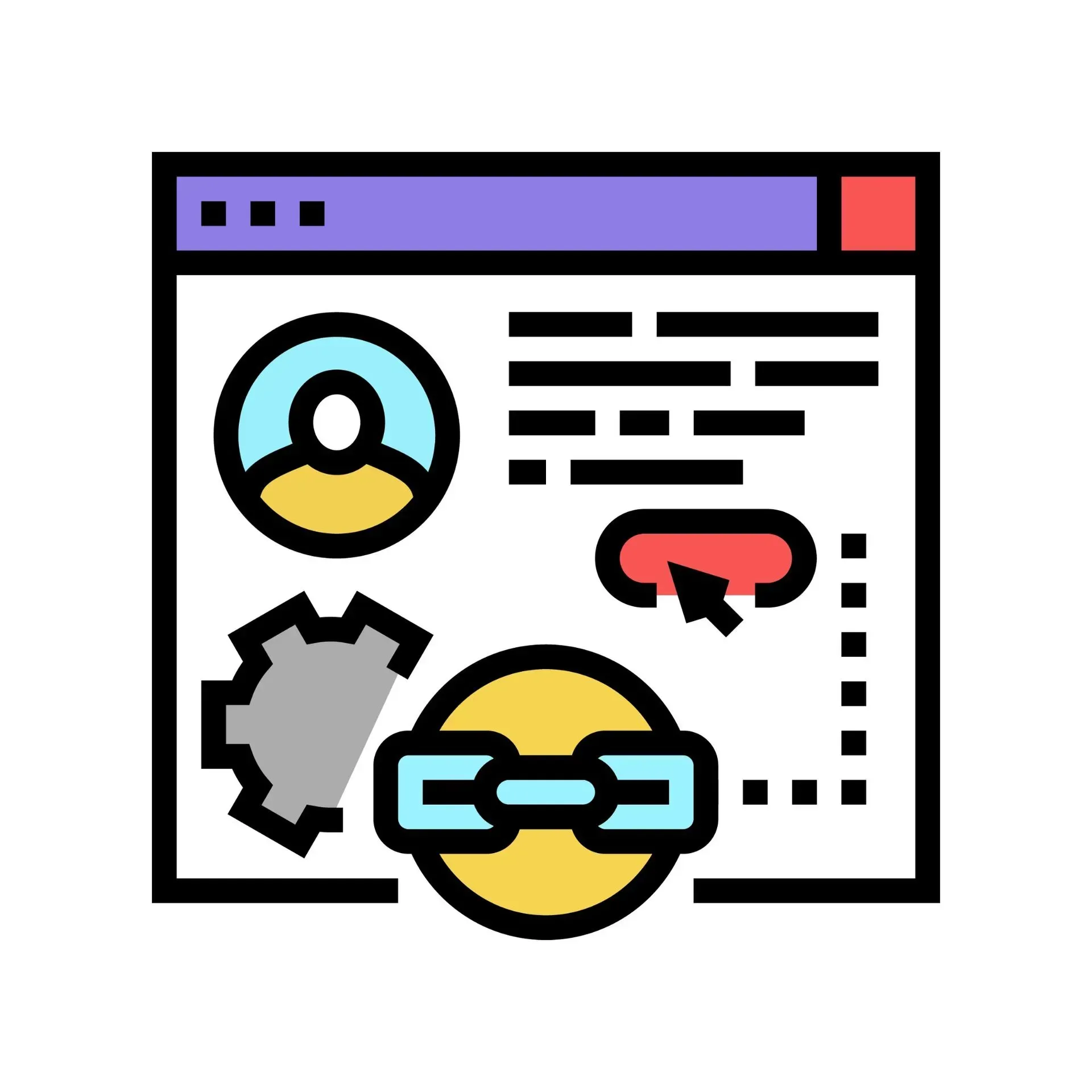What Are On-Page Ranking Factors For SEO?
Search engine optimization (SEO) is the foundation of a website’s visibility, and on-page SEO is its heart.
Think of it as the meticulous work that happens within your website to make it attractive to both search engines and your audience. Optimizing your on-page SEO can significantly impact your organic search rankings and help drive more qualified traffic.
But what exactly constitutes on-page SEO, and how can you ensure your website hits all the high notes?
This comprehensive guide will walk you through the most crucial on-page ranking factors that can elevate your website’s visibility and performance.
Keyword Research and Usage
Effective keyword research is the starting point for any successful SEO strategy. Your keywords are the bridge between your potential audience and your website.
Why Keyword Research Matters
Keywords reflect what your audience is searching for online. By targeting the right keywords, you can attract users with intent, improve your rankings, and drive qualified traffic.
How to Identify Keywords
- Primary Keywords: These are the main search terms you want to rank for. Use tools like Google Keyword Planner or SEMrush to identify high-volume, low-competition keywords.
- Secondary Keywords: These are supporting keywords that provide context and breadth to your content.
Where to Use Keywords
- Title Tags and Headings (H1, H2, H3, etc.)
- Within the First 100 Words of Your Content
- URLs
- Meta Descriptions
- Alt Text for Images
💡 Pro tip: Overusing keywords (known as keyword stuffing) can hurt your rankings. Use them naturally and strategically.
👉 Sign up now to request your free website assessment from DR!NKGYM, your digital marketing partner in Phoenix.
Content Quality and Relevance
Content sits at the very core of on-page SEO. Imagine walking into a bookstore and finding only vague, poorly written books. You wouldn’t stick around, right? The same concept applies to your website.
Creating High-Quality, Original Content
- Make your content unique and avoid duplicating text from other sources.
- Conduct thorough research and incorporate up-to-date data to build authority.
- Include examples, case studies, or graphics to enhance user engagement.
Satisfy User Intent
Users search with a specific intention, whether informational, navigational, or transactional. Cater to their needs by aligning your content with their search objectives.
Build Authority with Your Content
Consistently publishing accurate, valuable content helps establish your website as an industry authority and builds trust with your audience.
✨
Fun fact: DR!NKGYM specializes in crafting SEO-optimized content strategies that maximize user engagement and search rankings.
Title Tags and Meta Descriptions
Content sits at the very core of on-page SEO. Imagine walking into a bookstore and finding only vague, poorly written books. You wouldn’t stick around, right? The same concept applies to your website.
Creating High-Quality, Original Content
- Make your content unique and avoid duplicating text from other sources.
- Conduct thorough research and incorporate up-to-date data to build authority.
- Include examples, case studies, or graphics to enhance user engagement.
Satisfy User Intent
Users search with a specific intention, whether informational, navigational, or transactional. Cater to their needs by aligning your content with their search objectives.
Build Authority with Your Content
Consistently publishing accurate, valuable content helps establish your website as an industry authority and builds trust with your audience.
✨ Fun fact: DR!NKGYM specializes in crafting SEO-optimized content strategies that maximize user engagement and search rankings.
Title Tags and Meta Descriptions
First impressions matter, and your title tags and meta descriptions are the first thing users see on search engine results pages (SERPs).
Writing Effective Title Tags
- Limit titles to 60 characters or less.
- Include your primary keyword as close to the beginning as possible.
- Make the title engaging and relevant to your audience.
Crafting Click-Worthy Meta Descriptions
- Stay under 155 characters.
- Use persuasive language and include a call-to-action (CTA).
- Include your primary keyword naturally.
🚀 Take action now with a free website analysis from DRINKGYM, Phoenix’s leading SEO agency.
Optimizing Heading Tags (H1-H6)
Heading tags not only organize content for readers but also guide search engines in understanding your page’s structure.
How to Use Heading Tags
- H1 should include your primary keyword and serve as the main title of the page.
- Use H2 and H3 tags to break content into scannable sections.
- Ensure each heading tag is descriptive and corresponds to the content beneath it.
💡 Bonus Tip: Structured content improves the readability and SEO value of your page.
Image Optimization
Images make your content more engaging, but they also need optimization to avoid slowing down your website.
Best Practices for Optimizing Images
- Compress images to reduce file size without compromising quality.
- Name image files descriptively (e.g., "seo-keyword-strategy.jpg").
Add alt text to describe the image, improving accessibility and helping search engines to understand it.
Internal and External Linking
Links are the lifeblood of SEO, helping search engines and users discover new pages.
Internal Linking
- Link to other relevant pages on your website using descriptive anchor text.
- Create a strong internal link structure to guide users toward important pages like blogs or products.
External Linking
Linking to reputable, high-authority websites adds credibility to your content and enriches the user experience. Just make sure the links are contextually relevant.
✨ Unlock the potential of your website with
Phoenix’s trusted advertising agency. DR!NKGYM empowers businesses with expert-level SEO strategies.
Mobile-Friendliness
Google prioritizes mobile-friendly websites in its rankings since most searches happen on mobile devices.
Design Tips for Mobile Optimization
- Use responsive web design to ensure your website looks great on any device.
- Keep navigation simple and intuitive.
- Test your mobile site with Google’s Mobile-Friendly Test Tool.
Site Speed Optimization
Nobody likes a slow website. Speed is not only critical for user experience but also a direct SEO ranking factor.
Tips to Improve Site Speed
- Optimize images and reduce file sizes.
- Use browser caching to store static resources.
- Minimize HTTP requests by combining CSS and JavaScript files.
🚀 Did you know? DR!NKGYM offers site speed optimization as part of its website analysis package.
Clean URL Structure
A clean and simple URL makes it easier for users and search engines to understand your content.
Best Practices for URLs
- Use short, descriptive URLs (e.g., "example.com/seo-on-page-ranking-factors").
- Avoid using unnecessary parameters or special characters.
- Incorporate primary keywords.
💻 Insight: URLs are often overlooked, but they carry significant weight in on-page SEO
Enhancing User Experience (UX)
Google’s primary goal is to satisfy users, which is why UX is so important.
How to Improve UX
- Simplify Site Navigation: Ensure users can find what they’re looking for in three clicks or fewer.
- Readable Typography: Use simple, legible fonts and proper spacing.
- Eliminate Pop-Ups: Minimize intrusive pop-ups that disrupt browsing.
🎯 Discover what’s holding your site back. Request a free assessment from DR!NKGYM, the
digital marketing experts in Phoenix.
Transform Your Website's Performance Today
Optimizing your on-page SEO is essential for ranking higher on Google, driving more traffic, and offering a seamless user experience.
Whether it’s mastering content quality, perfecting heading tags, or refining mobile responsiveness, every detail matters.
Take the first step now. Sign up to get a free website assessment from DR!NKGYM. We’ll provide a personalized plan to overhaul your online presence and help you achieve measurable results.










